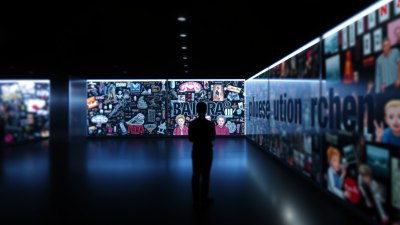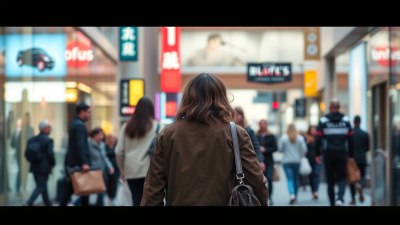What You Saw Was Not What Was There
Explore the complexities of perception and reality in this compelling article.

Image created with Flux Schnell
In a world filled with stimuli, the essence of what we perceive often diverges from reality. The statement 'What you saw was not what was there' resonates deeply in various domains, from psychology to neuroscience, philosophy, and even art. Our perceptions are shaped by myriad factors, including past experiences, emotions, and even cultural contexts. This article delves into the intricacies of perception, providing insights into why what we perceive may not align with the actual phenomena surrounding us.
The Nature of Perception
Perception is the process by which individuals interpret sensory information. This process involves not just the physiological mechanisms of sight, sound, touch, taste, and smell, but also the cognitive framework that operates behind the scenes. Our brains constantly filter and analyze incoming data to make sense of the world, but this filtering process is not infallible. Numerous studies highlight that our senses can often mislead us, creating illusions or errors in judgment.
One of the most common occurrences of this phenomenon is in optical illusions. These captivating images reveal how easily our brains can be tricked into seeing something that is not there or interpreting a visual stimulus in a way that conflicts with reality. For instance, the famous Müller-Lyer illusion portrays two lines of the same length, with arrows at their ends pointing in opposite directions. Despite both lines measuring identically, one appears longer than the other due to the positioning of the arrows. This example underscores how context and framing can drastically alter our perception.
Cognitive Biases and Heuristics
Our cognitive processes are further complicated by biases and heuristics. Cognitive biases are systematic patterns of deviation from norm or rationality in judgment. They can distort our perceptions and lead to flawed decision-making. A prime example of this is confirmation bias, where individuals tend to favor information that validates their existing beliefs while disregarding contradictory evidence. This bias can warp our perceptions and lead us to see only what we want to see, rather than a more balanced view of reality.
In addition, heuristics, mental shortcuts that ease the cognitive load of decision-making, play a pivotal role in shaping our perceptions. While heuristics often serve us well by providing quick conclusions, they can also lead to errors in judgment. The availability heuristic, for instance, causes individuals to overestimate the importance of information that readily comes to mind. If a person frequently hears news reports of plane crashes, they may develop an unwarranted fear of flying, despite statistics indicating that air travel is one of the safest modes of transportation.
The Influence of Emotions
Emotions also significantly affect our perception. When we feel happy, we may perceive the world around us in a more positive light. Conversely, negative emotions can cast a shadow on our interpretations. This is evident in various psychological studies, which show that mood can alter our perception of external stimuli and influence our reactions. A person experiencing sadness may interpret neutral expressions as hostile, while someone who is joyful might perceive the same expressions as friendly.
Moreover, the physiological responses accompanying emotions, such as increased heart rate or heightened arousal, can further modify how we interpret our surroundings. Our emotional state acts like a lens through which we view the world, leading us to focus on certain aspects that align with our feelings while overlooking others.
Social and Cultural Contexts
Societal norms and cultural contexts can also shape our perceptions significantly. Different cultures have unique ways of interpreting experiences, behaviors, and symbols, which can lead to varied perceptions of the same event. For instance, a gesture that is considered friendly in one culture may be interpreted as offensive in another. This cultural lens underscores the complexity of perception, demonstrating that our interpretations are not merely personal but also socially constructed.
Within the realm of social interactions, the context in which an event occurs can enormously shift our perception of it. Group dynamics, societal expectations, and even the presence of authority figures can influence how we interpret behaviors and events. Psychological experiments, such as the Asch conformity experiments, reveal how individuals often alter their perceptions to align with the group, showcasing the power of social influence.
Perception in Art and Media
The concept of perception versus reality is especially pronounced in art and media. Artists often play with perception to challenge viewers’ interpretations and provoke thought. Through techniques such as perspective, color manipulation, and abstraction, art can reflect subjective realities that diverge from objective truths. This exploration raises questions about the very nature of reality itself—how much of what we perceive in art is a reflection of the artist's intent versus our own interpretations shaped by personal experiences?
Visual media, including films and photography, also manipulate perception. Directors and photographers use techniques such as lighting, angles, and editing to craft narratives that elicit specific emotional responses or guide viewers toward particular interpretations. This deliberate manipulation can blur the line between what is real and what is presented, making us question the authenticity of what we are consuming.
The Role of Technology
In the modern digital age, technology adds yet another layer to our perceptions. With the prevalence of social media and digital communication, individuals are increasingly exposed to curated versions of reality. Filters, editing tools, and the selection of what to share all contribute to a distorted view of reality. As users showcase their ‘ideal’ lives, it reinforces a perception that may not reflect the true human experience, leading to comparisons and feelings of inadequacy.
The rise of deepfakes and virtual reality presents further challenges to perception. These technologies can create highly convincing alternate realities or falsify events, complicating our ability to discern what is real. As we navigate a world where visual authenticity is constantly questioned, understanding the nuances of perception becomes essential.
Philosophical Implications
The debate over perception and reality extends into philosophical realms. Philosophers have long pondered the nature of reality and how perception affects our understanding of it. René Descartes famously asserted, 'I think, therefore I am,' suggesting that the act of thinking is fundamental to existence. This concept aligns with the notion that our perceptions, shaped by thought and cognition, crucially inform our understanding of the world.
On the other hand, the branch of philosophy known as phenomenology examines how individuals experience phenomena and how these experiences shape their understanding of reality. This perspective emphasizes that reality is not a fixed entity but rather a fluid and subjective experience influenced by perception.
Understanding that 'What you saw was not what was there' calls us to recognize the complexity of our perceptions. By appreciating the multifaceted nature of perception, we can cultivate a greater awareness of the biases and influences that shape our interpretations. This awareness is essential, especially as we engage with diverse perspectives in an increasingly interconnected world. Ultimately, embracing the idea that perception is subjective encourages empathy, understanding, and a deeper engagement with both ourselves and others.











